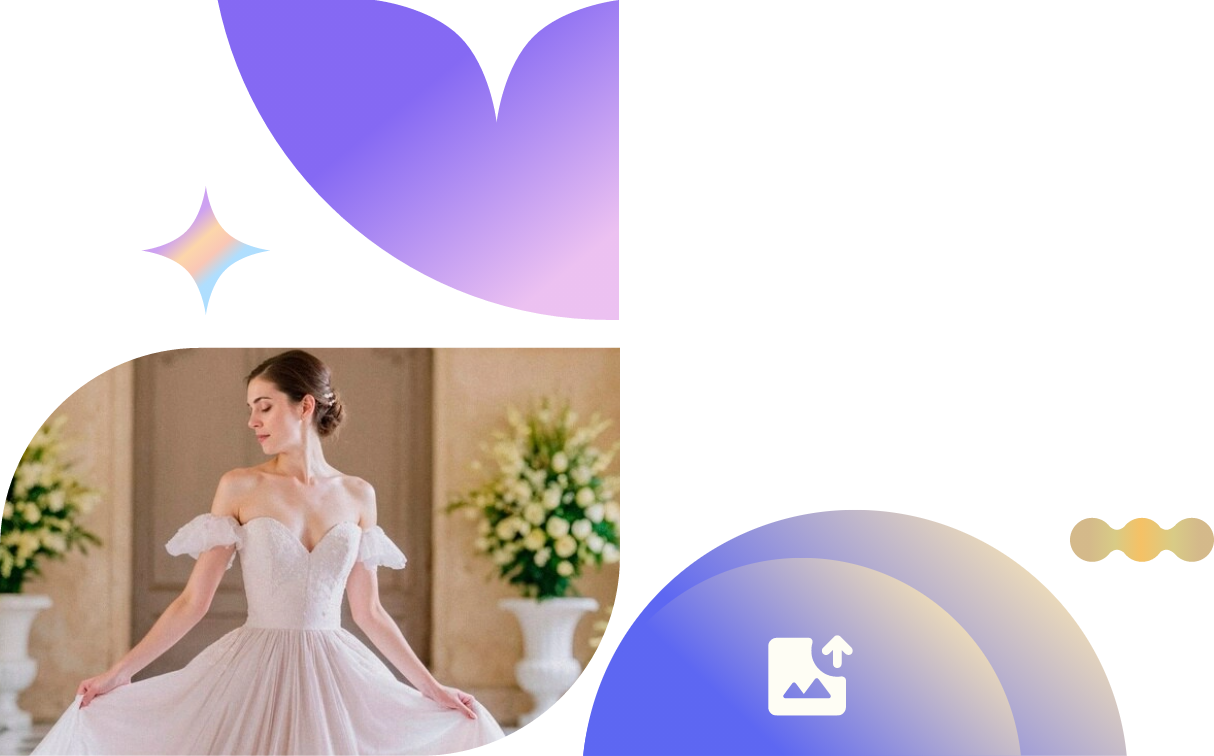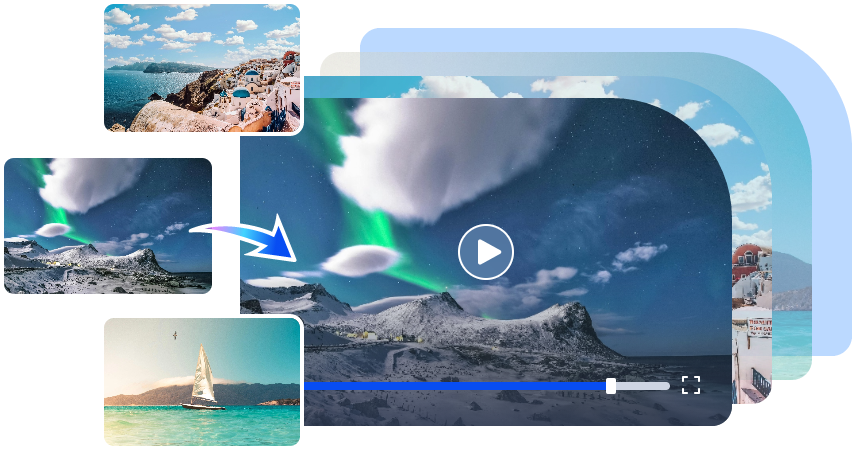Stable Diffusion, as a powerful open-source image generation model, has made waves in the creative field since its debut. Now, its face swap functionality has also carved out a niche in the AI world. While Hollywood VFX artists still burn the midnight oil perfecting a single frame of facial replacement, Stable Diffusion face swap has already shattered the traditional workflows and limitations of face swapping. With just a click, AI can seamlessly "graft" an ordinary person's face onto a famous painting, give anime characters realistic human features, or even enable a protagonist to "transform" across time and space in a video.
What kind of magic lies behind this revolutionary technology? How does it allow images to break through dimensional barriers and move freely between reality and virtuality? Let's unveil the mystery of face swap Stable Diffusion together.

- On This Page
- What Is Stable Diffusion Face Swap & How Does It Work?
- Different Options for Realizing Stable Diffusion Face Swap
- Stable Diffusion Face Swap Too Complicated? Best Free Alternative Here
- FAQs About Stable Diffusion Face Swap
What Is Stable Diffusion Face Swap & How Does It Work?
Stable Diffusion Face Swap is an algorithmic technique that replaces one person's face with another's in an image or video. Unlike other solutions that often produce unrealistic or unstable results, it offers strong customization flexibility, ensuring seamless and natural face-swapping effects by applying different extensions or fine-tuned models.
From a technical perspective, Stable Diffusion AI face swap is primarily based on the Latent Diffusion Model, alongside GANs and Autoencoders. During operation, Stable Diffusion locates key facial points on both the target face and the destination image. It then encodes the key features of the target face and blends them into the encoding of the destination image. Finally, through decoding and image generation, the target face is embedded into the original image, producing a stylistically consistent result.
Different Options for Realizing Stable Diffusion Face Swap
However, it's important to note that Stable Diffusion itself is just an image-generation model—it's not a ready-to-use face swap tool. What people often refer to as "Stable Diffusion face swap" usually involves extensions or fine-tuned models built on Stable Diffusion, pre-developed and adjusted specifically for face-swapping purposes. Here are some of the most popular projects:
LoRA
LoRA has emerged as one of the most highly regarded Stable Diffusion face swap solutions in the past year. LoRA is actually a fine-tuning technique primarily used to optimize model training and adjustments. This method is particularly suitable for face swap tasks involving specific individuals, such as replacing faces in movies, anime, or other media with yourself.

LoRA requires only a small amount of image data to fine-tune Stable Diffusion, enabling it to quickly capture unique facial features for precise and accurate face swaps. This approach significantly reduces computational demands, training data requirements, and GPU load while minimizing workload.
Since it's fine-tuned for a specific individual, the results are highly detailed, with excellent image blending. The only downside is that each new face swap requires fresh training, and even finding pre-trained LoRA models can be a hassle.
Roop & ReActor
Roop is a face swap extension designed specifically for Stable Diffusion WebUI. It's simple to use yet powerful—just upload a target face, then generate swapped images using text-to-image or image-to-image modes, making it almost as easy as "one-click" online face swap tools.
What makes Roop stand out is its rich parameter adjustment options. Users can fine-tune the intensity of target face features, alignment positions, skin tone, and lighting blending to ensure realistic results.

ReActor is a fork of Roop, offering improvements and optimizations that enhance stability and smoothness when processing large datasets. While ReActor delivers higher-quality swaps and faster speeds, some users still report suboptimal results.
ControlNet
ControlNet is another extension for face swap Stable Diffusion, providing strong controllability. By introducing additional conditional inputs, ControlNet guides Stable Diffusion to generate face-swapped images that meet specific requirements. After detecting and extracting facial key points, users can further refine outputs using prompts. For example, entering anime-style prompts allows the model to blend facial features into the target image with an anime aesthetic, opening up creative possibilities for digital art, character design, and more.
Stable Diffusion Face Swap Too Complicated? Best Free Alternative Here
There's no doubt about Stable Diffusion face swap's excellent results and rich customization options, but its steep learning curve and technical demands can be daunting. From deploying large models and configuring files to installing extensions and tweaking parameters, the entire process is complex. Beyond the expertise required, it also demands significant CPU and GPU power. If you're just curious and want to experiment, Vidwud AI Face Swap is a compelling alternative.

In the face swap arena, Vidwud offers distinct advantages over Stable Diffusion. Its intuitive interface makes it easy for beginners — just upload source and target face images, and let Vidwud's AI handle the rest. No complicated installations or parameter adjustments are needed; results are generated in seconds.
Key Feature
-
100% Free & Easy to Use: This web-based tool is completely free, allowing users to enjoy the fun of Stable Diffusion AI Face Swap without struggling with technical settings.
-
Guaranteed Output Quality: Vidwud Face Swap matches skin tones, textures, and lighting for seamless blending, minimizing visible artifacts — ideal for users seeking high-quality results.
- Hardware-Friendly: Optimized for common hardware and image formats, Vidwud runs smoothly even on consumer-grade GPUs or integrated graphics, eliminating performance concerns.
- Rich Face Swap Modes: Vidwud is a one-stop solution, offering Photo, Video, and Multiple Face Swap modes to meet all creative needs effortlessly.
FAQs About Stable Diffusion Face Swap
What are the hardware requirements for Stable Diffusion face swap?
Running Stable Diffusion face swap requires decent hardware. A GPU with at least 8GB VRAM (e.g., NVIDIA RTX 30/40 series) is recommended for smooth operation. Lower-end hardware may cause slow processing or instability.
What about copyright issues with face-swapped images?
Copyright can be tricky. Non-commercial use is generally safe, but commercial applications (ads, films, promotions) without permission may infringe on portrait rights, leading to legal risks.
Why do my Stable Diffusion face swaps look unnatural?
Possible reasons include incorrect extension settings, poor-quality datasets, or model incompatibility. Troubleshoot these factors or try alternatives like Vidwud AI Face Swap for better results.
Conclusion
Stable Diffusion face swap has unlocked a new world of creativity. From ReActor and Roop to ControlNet and LoRA, these tools empower users to redefine digital imagery. If you're eager to experiment, Vidwud Face Swap offers a free, user-friendly alternative — dive in and unleash your creativity today!
Free AI Image to Video Generator
-
Best free online image to video generator
-
Turn any text/image to vivid video with high quality
- Clean and intuitive interface design
Turn Image to Video Now










![Face Morph Online – Fun, Easy & Instant! [8 Tools Tested]](https://cdn.vidwud.com/blog_files/20250523/face-morph.png)




